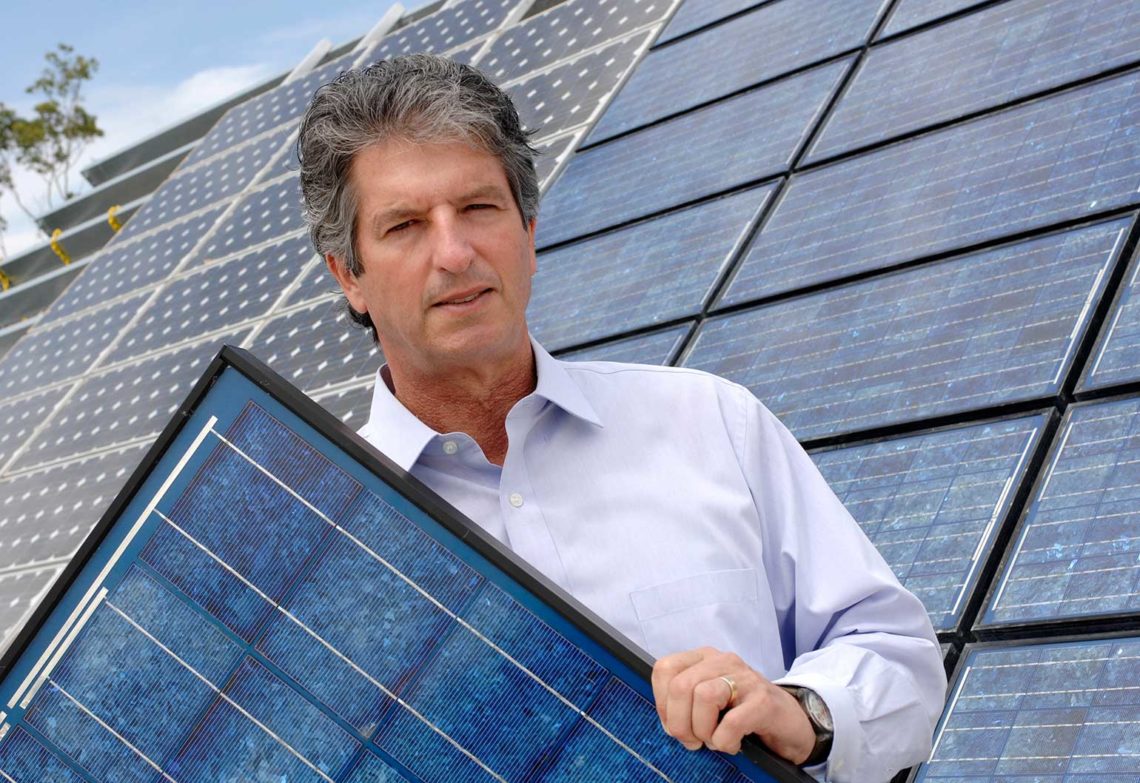Professor Martin Green has been awarded the 2021 Japan Prize for Resources, Energy, the Environment and Social Infrastructure for his revolutionary work in the field of photovoltaics.
The annual prize is one of world’s most prestigious awards given to those who have helped to make significant advances in the fields of science and technology worldwide, furthering the cause of peace and prosperity of mankind. Two fields of scientific endeavour are honoured each year.
Green, Scientia Professor at the University of New South Wales, works in photovoltaics — the direct conversion of light into electricity at the atomic level — which is transforming solar power. He said there have been two key breakthroughs in his research.
“The first is that I led the team that improved silicon solar cell performance by over 50 per cent, holding the world record for silicon cell efficiency for 30 of the last 38 years, and setting 18 separate world records along the way. I also personally invented the [Passivated Emitter and Rear Cell] in 1983 that now accounts for over 85 per cent of worldwide solar cell production,” he told create.

“The second contribution comes from the scientists and engineers that I trained during this period. These successfully set up the first commercial solar cell manufacturing in low-cost regions of Asia, particularly China, through Australian-Chinese joint ventures. This was a crucial step in bringing solar costs down to the very low levels we see today.”
Green became interested in the rapidly evolving field of microelectronics in the final year of his engineering degree, when exciting things were happening, such as putting more transistors onto a chip.
However, he was looking for a career that could have a greater social impact, and realised that his microelectronics skills and knowledge could be applied to photovoltaics.
Sky’s the limit
Photovoltaics might not be a household name, but they already play a role in many of our domestic lives.
“Many Australians already see a lot of photovoltaics in their everyday life, with about a quarter of private homes already equipped with solar — more in total than anywhere else in the world,” Green said.
“This fraction will grow, with more solar to be seen on commercial buildings and shopping centres in the future, as well as large fields of solar in rural areas. I’m looking forward to seeing solar integrated into electric vehicles, increasing the period between charging as well as extending the driving range.”
His next project involves working on two areas supported by the Australian Renewable Energy Agency (ARENA) aimed at further reducing costs to “insanely cheap” levels.
“Solar modules operate best when cool, so we are looking at simple changes in module design that will reduce the temperature at which they operate,” he said.
“Solar modules are very reliable, with typical 25 to 30 year warranties, but we think this will not only increase their output but increase warranties possibly to 50 years.”
Green and his team are also researching how they can further improve the solar module output by 40 per cent to 50 per cent by depositing one or more thin cells made from different materials on top of silicon.
“These would be designed to convert the higher energy blue and green photons in sunlight more efficiently than silicon can, with this specialisation giving the targeted boost,” he said..
“The challenge is to find material that has all the almost ideal properties of silicon — that is abundance, non-toxicity, stability and, of course, high solar conversion efficiency.”



